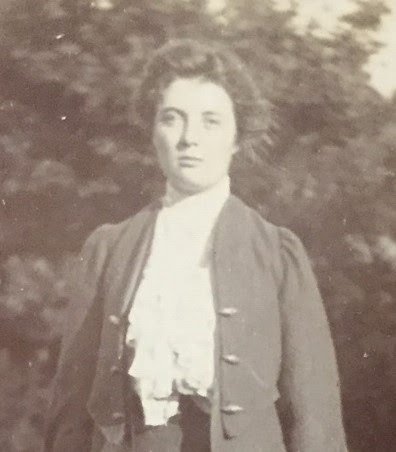Find out about the behind the scenes research conducted by Maureen Flisher, into the Great North Museum: Hancock’s first female Curator, Gladys Scott.
As part of the ‘Nature’s Cure in Time of Need: New Voices for North East Nature’ project, funded by the National Lottery Heritage Fund, our amazing archive volunteers have been using the North East Nature Archive to tell the lesser-known stories of North East nature, NHSN, and the Great North Museum: Hancock.
In this blog, volunteer Maureen Flisher shares her research into the Museum’s first female Curator, Gladys Scott. The Great North Museum: Hancock was established in 1884 by the Natural History Society of Northumbria, which also owns the museum’s collections. Initially opened as the New Museum of Natural History, it was renamed in 1890 in honour of prominent North East naturalist and NHSN member, John Hancock.
The Curators’ diaries, which are the primary source material for Maureen’s research, can be accessed by appointment at the North East Nature Archive, along with other rich collections relating to the Museum, NHSN and North East nature.
Kate Guariento, Project Archivist, nena.nhsn@newcastle.ac.uk

Gladys Muriel Scott – The Museum’s First Female Curator
Gladys Muriel Scott was elected by Council to the post of “Lady Assistant & Secretary” in May 1914. Privately educated, she initially took on many of the secretarial duties associated with the Society including the production of financial reports. In between her routine duties the Curator, Mr Gill, taught her how to clean, preserve, and treat some of the Museum’s famous egg and butterfly collections, checking each item and their cases for mould and disease. This gradual approach to her learning would have continued had it not been for the the Military Service Act and with it conscription.
In 1916, with all eligible men, including Mr Gill, drafted into the services, Gladys found herself in the role of Assistant Curator sharing the care of the Museum’s many collections with the Curator’s father who had similarly been brought in to help. A difficult time financially for the Museum, they both worked hard to maintain the vast quantities of reference material, process donations and keep the building open to visitors who were an important revenue source. When Mr Gill returned from war in 1919, such were the skills Gladys had demonstrated that he elected to keep her in the role of Assistant Curator.
Throughout the 1920s and 1930s the Museum’s diaries (held in the North East Nature Archive), document the extraordinary amount of work Gladys got through, and her ability to turn her hand to anything asked of her; from darning carpets to overhauling reference collections and stock rooms, to teaching herself to use the Museum’s printing press producing thousands of descriptive labels “of excellent quality” – nothing seemed beyond her capabilities.
Her passion however was the Ethnographical collections. The department was overcrowded with artefacts from across the globe and in need of both conservation and restoration. In a report to Council in 1930 her work “to repair the ravages of time, dust, mould, mite, moth and beetle upon the mass of material which had been accumulated” was acknowledged. The results it was said were outstanding.
In 1939, with the then Curator Mr Goddard drafted into the Intelligence Core, Gladys took on the role of Acting Curator. Leading a small team she worked tirelessly to maintain the fabric of the Museum and its collections competing for and often having to justify her need for essential supplies of coal, timber, paint and preservatives. In 1946, Council promoted Gladys to Deputy Curator.
Unerringly practical, Gladys also had a softer side. During the late 1800s/early 1900s, live birds and some small mammals were donated to and lived at the Museum. Gladys often records their antics, in the daily diaries, particularly those of Punch and Judy, two orphaned fox cubs of which she was extremely fond of, along with “Socrates the Gecko”.
In 1948, following the death of Mr Goddard, Gladys assumed the role of Temporary Curator until Mr Fisher was appointed as Curator in 1949. With her increasing ill health due to rheumatoid arthritis, Gladys tendered her resignation in May 1954, aged 70, having completed 40 years loyal service which “The Council accepted with great regret.” Gladys continued to take a keen interest in the Society until her death in 1970 aged 86. There is no doubt that the Natural History Society of Northumbria owes Gladys a debt of gratitude for the work she did, one of NHSN’s many unsung heroes.
